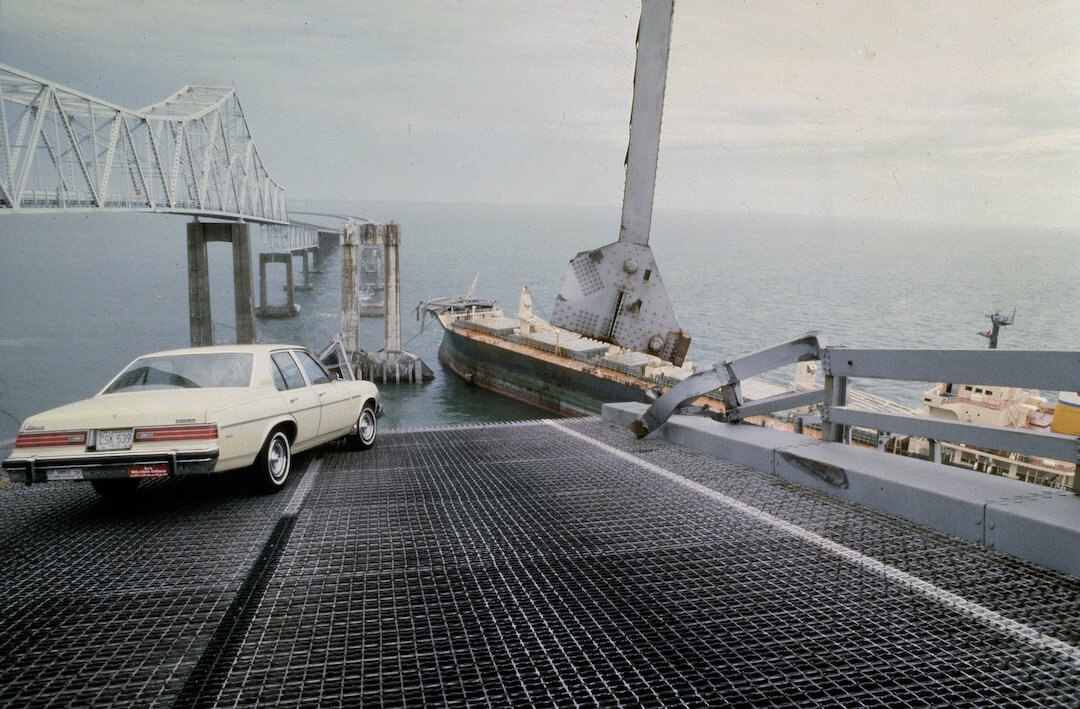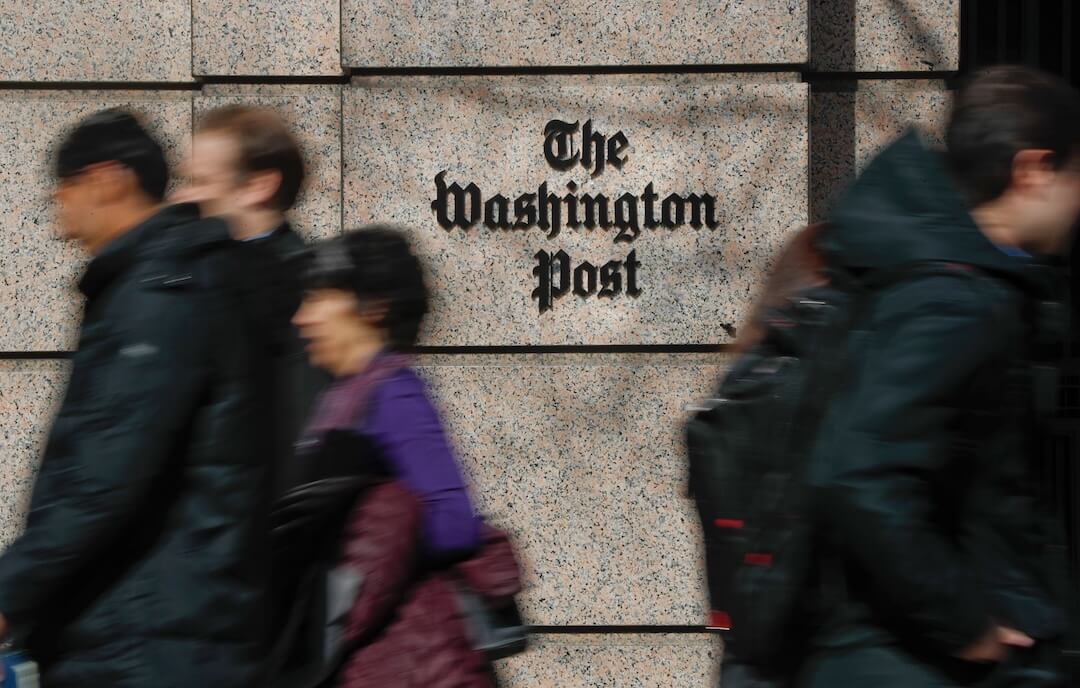For many living in Florida, news of the Francis Scott Key Bridge disaster in Maryland brought back terrible memories. A defining news event for a generation of people living around Tampa Bay was the destruction of the Sunshine Skyway Bridge, struck by an oil freighter during a stormy morning in May 1980. Thirty-five people drove off the jagged end of the bridge to their deaths that morning, a tragedy often remembered by those who now drive over the magnificent span that replaced it.
The reporting and storytelling about the Skyway disaster, that day and over the years, are full of lessons for those who are called upon to make sense of the unthinkable.
What follows is a retrospective I wrote in 2021 when one of the last key figures in the Skyway disaster, a veteran toll taker, passed away. It honors the work of one of the outstanding reporters in town by chance that day, Gene Miller of the Miami Herald.
Miller modeled one of the most important reporting and writing strategies: “the bigger, the smaller.” When the bridge falls down, interview the toll taker.
The taking of tolls and a final saga from the Sunshine Skyway Bridge disaster
At her toll booth, Rae Duato, who died recently, made change and then made history.
First published in the Tampa Bay Times on July 8, 2021
What was your most memorable day at the office?
My guess is that if we could ask Rae Duato, she would tell us it was Friday, May 9, 1980. That was the day a freighter called the Summit Venture hit the southbound span of the Sunshine Skyway Bridge. More than a thousand feet of the bridge collapsed, sending 35 people over the edge to their deaths.
Rae Duato, who was taking tolls that morning — including from people who would die in the disaster — lived a long life. She died on June 23 at the age of 93. Her obituary notes she was the supervisor on duty the day the bridge fell.
Even in a time of pandemic, the Skyway disaster stands as the most dramatic news event in the history of the Tampa Bay region, yes, even more dramatic than our recent Super Bowl victory.
Those of us who remember the Skyway story know the cast of characters: John Lerro, the harbor pilot who tried to steer the huge ship through a freak storm; Wesley MacIntire, who drove his pickup over the edge into the bay, only to be pulled to safety by a rope ladder from the ship; and Richard Hornbuckle, the used car dealer who managed to stop his Buick Skylark less than two feet from the jagged edge.
And then there was Rae Duato, taker of tolls. According to a story back then by Gene Miller of the Miami Herald, it was Duato who took Hornbuckle’s toll money. “At the toll booth Hornbuckle gave a $10 bill to Rae Duato, who gave him $9.50 change quickly because she was getting wet.”
Such is fate that there can be little doubt that if Hornbuckle had the exact change that morning — two quarters — he and his three passengers would have dropped over the edge, probably to their deaths.
Duato’s obituary says that she began work at the Sunshine Skyway Bridge in 1954 when it was brand new. She kept that job for 33 years, until retirement and the opening of the new bridge in 1987.
Of all the great stories about the Skyway Bridge disaster my favorite is the one written by Gene Miller. Miller was in Tampa that day in 1980 on another assignment and managed to find the driver of the car that skidded to a stop 24 inches from the edge. Here is Miller’s memorable lead sentence:
Richard Hornbuckle, auto dealer, golfer, Baptist, came within two feet Friday of driving his yellow Buick Skylark off the Sunshine Skyway Bridge into Tampa Bay.
That simple sentence takes 25 words, but each one advances the story. Miller takes advantage of the protagonist’s unusual name — Hornbuckle — with its auto imagery. This will turn out to be the story of an auto dealer driving a used car with good brakes. Miller, a master of detail, gets good mileage out of “yellow Buick Skylark.” “Yellow” goes with “Sunshine,” and “Skylark” goes with “Skyway.”
But the real energy comes with those three nouns after the subject. Each foreshadows a thread of narrative. “Auto dealer” sets up a description of Hornbuckle’s work schedule and how he came to be at that spot on that day. “Golfer” prepares us for the crazy moment when — during his escape from the vehicle — Hornbuckle turns back and closes the car doors, tempted to retrieve those golf clubs in his trunk. “Baptist” makes way for a wry quote in which the reluctant believer turned survivor swears that he’ll be in church the next morning. “Auto dealer, golfer, Baptist.”
There are other details as well. We learn that Hornbuckle ate breakfast at the Cadillac Restaurant on Route 19 and with his eggs drank four cups of coffee. Maybe that caffeine sharpened his 60-year-old reflexes. He must have been a sight, wearing red pants and a red jacket over a red polka dot shirt.
But it remains his brief encounter with Rae Duato that sticks with me.
Think for a moment about the job of the toll taker: You sit in a booth, you take money, you make change, time after time. Consider how many drivers — and how much car exhaust — she encountered in 33 years of service.
And yet there is a kind of mythology attached to the task. In the stories of ancient Greece, to get to the underworld after death required a journey by boat over a river. The name of the ferryman was Charon, a dark figure with fiery eyes, who required you to pay a toll.
The toll was paid with a coin, placed in the mouth of the dead person, as was the ancient practice.
Once again, enter Rae Duato, and the few seconds she spent with Richard Hornbuckle that day.
What if there had been no toll? What if Hornbuckle had exact change? What if Duato had been a little faster? What if Hornbuckle had not slowed down? The answers carry us from ancient mythology to 20th century existentialism. They make us wonder about fate, destiny, chance, accident and providence.
Any of us could have been driving across that bridge that day at 7:38 a.m.
There is another meaning for the word “toll” besides the idea of payment. It denotes the ringing of a bell, but has its own suggestion of mortality. In a famous meditation, the English poet and cleric John Donne, wrote “Never send to know for whom the bell tolls. It tolls for thee.” When we count those lost in a disaster, we call it the death toll.







